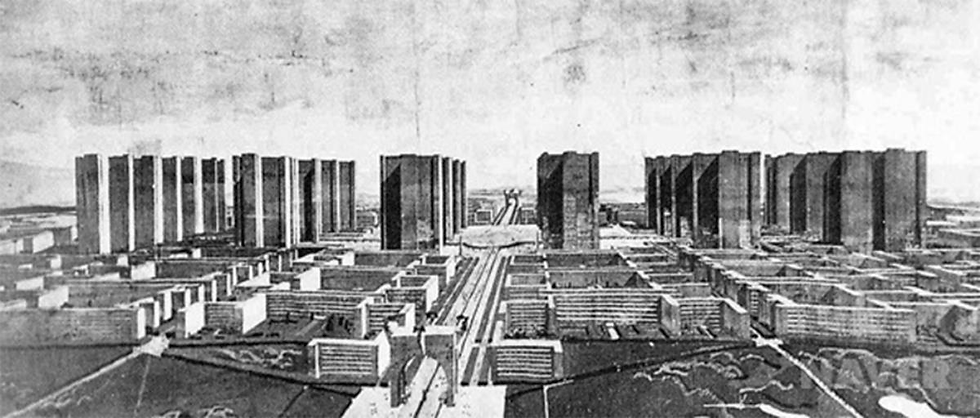Why Utopian Cities Fail- Jane Jacobs on the Nature of ‘Real’ Cities
- Zoeanna Upadhyay

- Jun 19, 2021
- 3 min read
Zoeanna Upadhyay.

Modern thinking about urban planning is heavily influenced by the ideas of Ebenezer Howard. His approach to city planning was to create self-sufficient, small towns surrounded by belts of Greenery which he called “Garden cities' '. These would consist of wide, radial roads; public parks, private lawns and well connected roads; where people could live harmoniously with nature. While it attempted to solve several real problems that affected cities, the flaw with this approach is that it makes certain assumptions about the nature of the city. Firstly, it assumes a linear dependency of two variables on each other. This leads us to think that one problem, like overpopulation, can be solved by introducing a feature, like open spaces. In reality, cities often consist of parks that are deserted, unused and unloved. Some open spaces can create vacancies that become places for crime, and others can become vacuums and dead-zones. Secondly, Howard relied heavily on the concept of abstraction, ignoring the practical ways in which city commerce, policy and economics are formed. A garden city was a completely isolated system, surrounded by plenty of natural resources and agricultural land and hence completely independent.
In the 1920’s, Le Corbusier tried to iron out some of the inconsistencies of a garden city. His vision for his Utopian ‘Radiant city’ or Ville Radieuse was an ordered, symmetrical and standardized metropolis where everything had a designated function, organized to form a whole. Essentially, he described the whole city as a park, with strategically placed high-rise skyscrapers to cater to population density. This would work; provided that the population remained static and nobody else ever had plans of their own.
But ‘real cities’ are not static places- they evolve and grow spontaneously the way any natural ecosystem does, with many variables that are interconnected and interdependent on each other in different ways. And although the interrelations of factors are complex, there is nothing accidental or irrational about the ways in which these factors affect each other (Jacobs, 1961).
How a city park is used, for example, depends not just on the design of the park itself, but also where it is located, the ages of the people who live nearby, and the kind of buildings and roads that surround it. These factors in turn are influenced not just by the park, but by each other and by other external factors.
Changing a single variable like the size of the park, or by cutting off access from one particular side can drastically change the functioning of the park. This is why simply changing the ratio of population to open spaces cannot directly determine how a city will function. This is also why factors that may be statistically inconsequential- like the presence of a bookstore on one particular street, cannot be discarded. Each city is specific; and solely by organizing it ‘rationally’ as Corbusier attempted to do, will not solve its problems.

Jane Jacobs, in her book “the Death and life of Great American Cities” proposes an alternate method to think about cities- as problems of organized complexity. This analyses cities as systems with interconnected components and processes that receive feedback and adapt over time. This is what Nassim Taleb describes as the ‘fourth quadrant of Extremistan’(Taleb, 2008)- improbable events that have massive consequences. This explains why the behavior of such systems cannot be predicted by just using statistical or probabilistic models. Instead, Jacobs suggests three ways that can help us solve the problems of real cities.
To think about processes;
To work inductively, reasoning from particulars to the general, rather than the reverse;
To seek for "unaverage" clues involving very small quantities, which reveal the way larger and more "average" quantities are operating.
These are tools for designers and urban planners, but also for ordinary citizens; who like Jacobs, are not trained in Urban planning to improve the quality of their cities.
References-
Jacobs, J. (1961) “The death and life of Great American cities”, New York:Random House
Nicholas Taleb, N. (2008), “The Fourth Quadrant: A map of the limits of statistics”, Edge.org. Retrieved from https://www.edge.org/conversation/nassim_nicholas_taleb-the-fourth-quadrant-a-map-of-the-limits-of-statistics
Kohlstedt, K. (2018), “Ville Radiuse: Le Corbusier's Functionalist plan for a Radiant City” https://99percentinvisible.org/






Comments